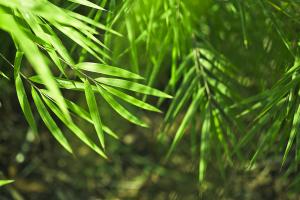Where to Plant Hawthorn Tree
Hawthorn tree is a popular ornamental tree that is known for its beautiful flowers, bright red berries, and glossy green leaves. It is also valued for its medicinal properties and is used to treat various health conditions. If you are planning to add a hawthorn tree to your garden, you need to know where to plant it to ensure its healthy growth and long life.
Soil Requirements
Hawthorn trees can grow well in a wide range of soil types, but they prefer moist, well-drained, and fertile soil. The soil should be slightly acidic with a pH of 6.0 to 7.5. If your soil is heavy, clayey, or compacted, you should amend it with organic matter, such as compost or well-rotted manure, to improve its structure and drainage. Avoid planting hawthorn trees in waterlogged or drought-prone soil as they can stunt their growth and make them susceptible to disease and pests.
Light Requirements
Hawthorn trees require full sun to partial shade to grow and thrive. Ideally, they should be planted in a location that receives at least six hours of direct sunlight a day. However, they can tolerate some shade, especially in hot climates where they need protection from the scorching sun. If you are planting hawthorn trees in a shady area, make sure they get adequate air circulation to prevent fungal diseases.
Climate Requirements
Hawthorn trees are generally hardy and adaptable to a wide range of climatic conditions, but their growth and flowering can be affected by extreme temperatures, humidity, and frost. They are best suited for temperate zones with moderate rainfall, mild summers, and cool winters. They can tolerate occasional drought, but they need regular watering during prolonged dry spells. If you live in a region with harsh winters, you should choose cold-hardy hawthorn varieties and protect them from frost damage by covering their roots with mulch or straw.
Pollination Requirements
Hawthorn trees are self-fertile, which means they can produce fruit without cross-pollination from another tree. However, cross-pollination can improve their fruit set, quality, and size. If you have space for two or more hawthorn trees in your garden, you can plant them together to increase their chances of pollination. Alternatively, you can plant them near other flowering trees or shrubs that attract pollinators, such as bees, butterflies, and hummingbirds.
Space Requirements
Hawthorn trees can grow up to 30 feet tall and wide, depending on the variety and growing conditions. They need ample space to develop a strong root system and spread their branches. You should plant hawthorn trees at least 10 feet apart from other trees and structures to give them enough room to grow. If you are planting them in a row, space them 15 to 20 feet apart to create a hedge effect. Avoid planting hawthorn trees too close to buildings, sidewalks, or driveways, as their roots can damage the foundations and the pavement.
Care Requirements
Hawthorn trees require little maintenance once established, but they benefit from regular pruning, watering, and fertilizing. Prune them in late winter or early spring to remove dead, diseased, or crossing branches and to shape them for better airflow and light penetration. Water them deeply during dry spells, especially during the first year after planting, to help them establish a deep root system. Fertilize them in early spring with a balanced fertilizer, such as 10-10-10, to promote healthy growth and flowering.
In conclusion, hawthorn trees are beautiful and valuable trees that can enhance the beauty and health of your garden. By planting them in the right location and providing them with adequate care, you can ensure their long-term success and enjoyment.

 how many times do yo...
how many times do yo... how many planted tre...
how many planted tre... how many pine trees ...
how many pine trees ... how many pecan trees...
how many pecan trees... how many plants comp...
how many plants comp... how many plants can ...
how many plants can ... how many plants and ...
how many plants and ... how many pepper plan...
how many pepper plan...































